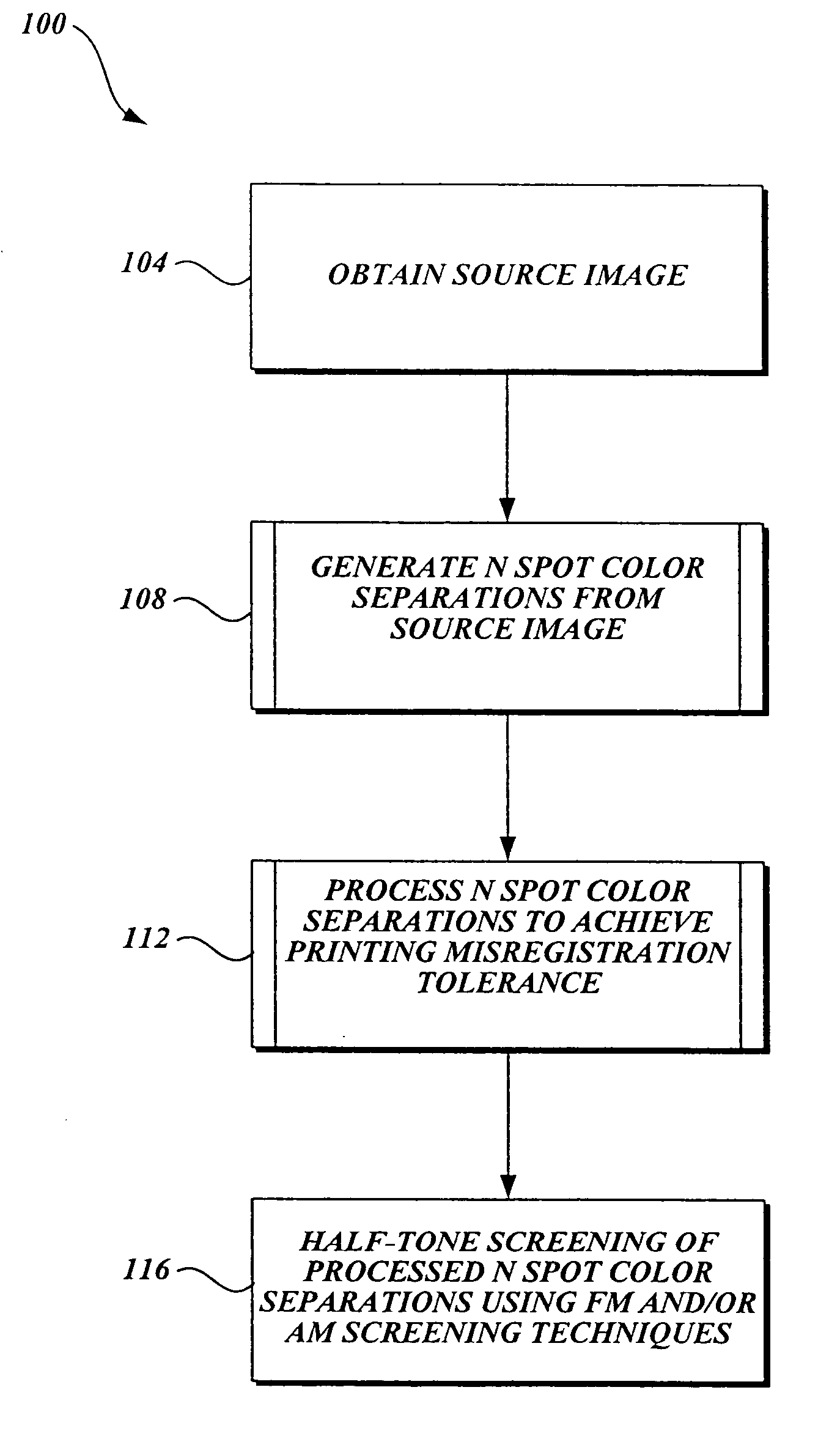Prepress workflow process employing frequency modulation (FM) screening techniques
a workflow and frequency modulation technology, applied in the field of prepress workflow processes, can solve the problems of inability to print continuous-tone, inability to print color images on corrugated packaging with these presses, and inability to provide attractive background for color printing
- Summary
- Abstract
- Description
- Claims
- Application Information
AI Technical Summary
Benefits of technology
Problems solved by technology
Method used
Image
Examples
Embodiment Construction
[0049] Embodiments of the present invention will now be described with reference to the accompanying drawings where like numerals correspond to like elements. Embodiments of the present invention employ frequency modulation (FM) screening techniques, also known as stochastic screening techniques, for improving image fidelity and color reproduction, i.e. increased image detail, higher tonal resolution and range especially with resolution and tone-limited, for flexographic direct printing of corrugated media. Embodiments of the present invention are directed to image processing techniques for achieving higher print resolution, greater tonal range and resolution of N-spot color separations (preferably where N<4) than what is achievable using amplitude modulation (AM) screening techniques on existing equipment. Several embodiments of the present invention are directed to image processing methods that also produce a reproduction composite image that is tolerant to misregistration when ge...
PUM
 Login to View More
Login to View More Abstract
Description
Claims
Application Information
 Login to View More
Login to View More - R&D
- Intellectual Property
- Life Sciences
- Materials
- Tech Scout
- Unparalleled Data Quality
- Higher Quality Content
- 60% Fewer Hallucinations
Browse by: Latest US Patents, China's latest patents, Technical Efficacy Thesaurus, Application Domain, Technology Topic, Popular Technical Reports.
© 2025 PatSnap. All rights reserved.Legal|Privacy policy|Modern Slavery Act Transparency Statement|Sitemap|About US| Contact US: help@patsnap.com



